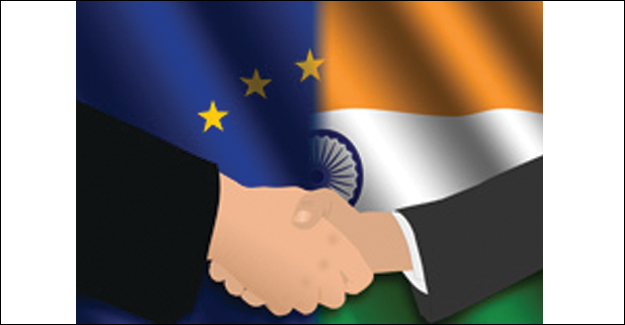
Indian Apparel Exports To EU Set For A High With FTA In Sight
Signing the Free Trade Agreement (FTA) with the European Union has been prioritized by the Indian government with an eye to push through textile trade with competitive pricing, said Textile Secretary Rashmi Verma.
“As of now Bangladesh may be enjoying preferential treatment and tax benefits for textile exports. However, India has a greater competitive edge in terms of environmental compliances,” explained Verma. It should be noted here that most of India-made apparels faces a duty of 9.6% while entering EU whereas Bangladesh enjoys zero duty benefits. Bangladesh’s top three products exported to EU are from chapters 61, 62 and 63 where India is also competing with Bangladesh, China and Vietnam. Bangladesh’s textile and apparel export to EU amounted US $ 15.9 billion in 2015-16 (59.8% of total textile and apparel export) where India lagged behind substantially.
“Once the FTA formalities are completed, India will definitely gain over Bangladesh in the textiles sector as the EU countries lay significant emphasis on environmental compliances, she added.
“Furthermore, the export growth of Chinese textiles is on the decrease. This serves as a turning point for the Indian textile industry. In addition, India has in its kitty the cost advantage that lends it a huge potential to feature prominently in international textile trade,” she observed.
“Our compliances will further improve because of the successful implementation of the Goods and Services Tax (GST). GST is expected to streamline the tax structure in a big way,” said Verma.
In an appeal to the the textile industry, the secretary stated, “Our industry should now take full advantage of the situation. We have released a special package for the textile sector. Indian textile industry now needs to focus on innovation, modernization and technological advancement. This will ensure that we turn out to be world leaders in the textile sector.”
She also spoke about skilling the workforce that can be employed in the textile sector. She emphasized that “Every year a minimum of 10 lakh workers have to be skilled to be inducted into the textile workforce in order to make us globally competitive. This way, we can not only meet the demands of the textile sector but also generate sufficient employment,” she added.
Textile Excellence
If you wish to Subscribe to Textile Excellence Print Edition, kindly fill in the below form and we shall get back to you with details.








